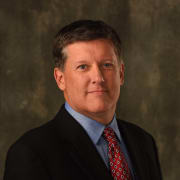Woods's Latest Surgery Will Provide Foot Stability; His Availability is a Different Question

More Weekly Read: LIV Golf Finds Success Down Under | Fore! Things
Tiger Woods’ latest injury woes and subsequent surgery is disheartening but not all that surprising. The eyeball test at Augusta National was one clue. So were the somewhat tepid comments that came from Fred Couples, Justin Thomas and Joe LaCava.
They all knew, deep down, that Woods was struggling every bit as much as he had been a year ago when he surprisingly returned to the Masters. Back then, it was an amazing comeback with the understanding that more time was needed. Now, big picture, he still faced the same issues on one of the most strenuous golf courses he could encounter.
LaCava, Woods's caddie since 2011, had gone to Florida to work with him the week prior to the year’s first major championship. He said during the tournament that it’s unlikely Woods would have played were it not the Masters.
It’s possible the surgery Woods had last week was going to be necessary anyway; and that the Masters just sped up the process.
Woods had what is called a subtalar fusion to his right foot. According to various medical experts—who are not part of Woods’s medical team—the fusion is meant to take two adjacent bones and fuse them together to form one larger bone. In this case, it was a fusion of the talus and calcaneus bone in the back of the foot.
The simple explanation here is that this was done to alleviate pain and help improve quality of life, while likely sacrificing mobility.
So the area will likely be more stable; it just won’t be as flexible.
The overall explanation is not that dissimilar to what Woods had done to his lower back in 2017. The spinal fusion merged two areas in his lumbar spine, removing the troublesome disk. It meant more stability but less flexibility. It also meant more pressure on the surrounding area, hence why Woods had another microdiscectomy—his fourth—in December 2020. That same surrounding pressure would be likely in the foot and ankle.
The rehab for this surgery should be much easier than what he endured with his back. That doesn’t mean it will be easy. Woods is likely to always have issues with his foot, including arthritis, and there will likely be a loss of rotation. It would be far worse in terms of golf if this were to his left foot, but the walking part of golf and being able to practice will undoubtedly remain a challenge.
How much Woods still wants to put in the effort to pursue what appears to be ever-fleeting golf glory is up to him. Almost certainly his goal of playing in all the major championships "plus a few more" is done for 2023. It would be mighty ambitious to think he could even come back at the British Open at Royal Liverpool, where he won in 2006.
That’s three months away and most of the medical opinions suggest it takes at least six weeks to three months for the fusion to take, with limited ability to put weight on the foot during that time. That means no chipping or putting and certainly not the ability to hit long shots.
Realistically, we are looking at a Hero World Challenge return in early December. Perhaps the PNC Championship, where he can ride a golf cart. Who knows if he can take part in the new golf venture, the Monday night tech-based TGL?
You can bet Woods will get in the weight room when he is allowed and do all he can to give himself a chance to play again. Even with a 48th birthday approaching at the end of the year and knowing that the competition he faces does not get any easier.
He’s joked about getting to use a golf cart on PGA Tour Champions and it just seems—as is his absolute right—that Woods would love the ability to enjoy the perks of all of his major championships success and play in those tournaments that suit him.
As he said prior to the Masters, overcoming adversity is part of his makeup.
"Stubbornness. I'm a little on the stubborn side," he said. "I believe in hard work, and I believe in getting out there and getting out of it what you put into it. I've worked very hard throughout my career and in my craft; I've always loved it.
"I've certainly had my share of adversity physically and had multiple surgeries and I've had to come back and work through that. Those were tough. They were never easy. But it's just the overall desire to win has always been there, and I've always worked at it and believed in what I could do.
"I've been stubborn and driven to come back and play at a high level. I think that has shown throughout my career and one of the reasons why I was able to—how many cuts I've been able to make in a row and how many tournaments I've been able to win over the course of my career, and that's just hanging in there and fighting on each and every shot. It means something. Each and every shot means something."
